We all know that when we attend a funeral we’re supposed to wear black and keep the jewelry and accessories minimal and subdued. Throughout history, different cultures have had various funeral rituals and there was even special jewelry to help grieve the passing of a loved one.
Early Mourning Jewelry
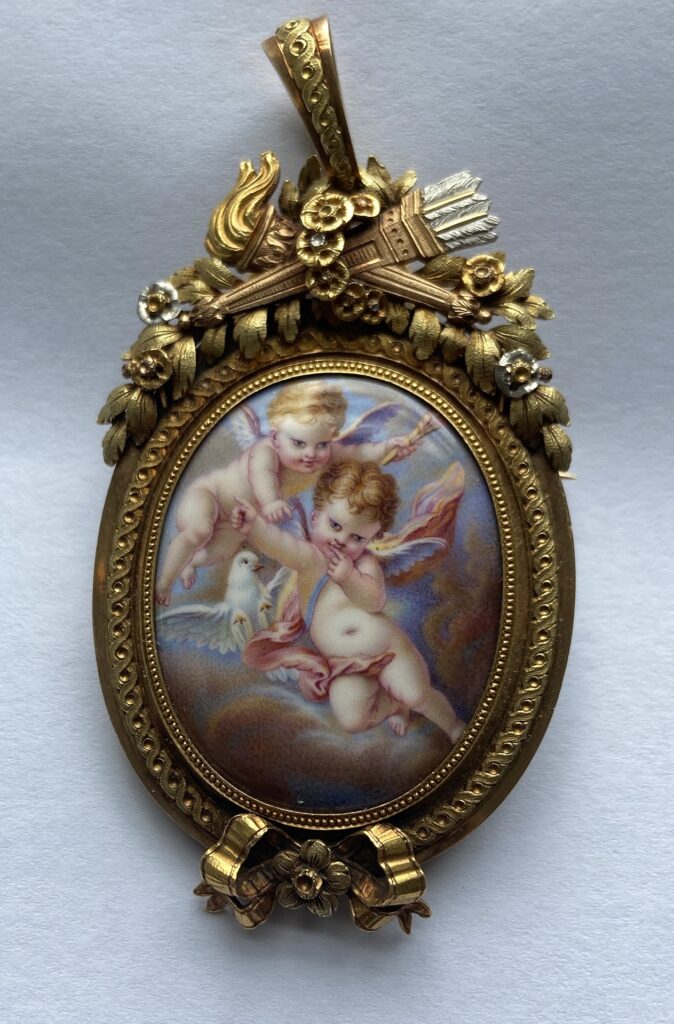
Elaborate funeral rites involving jewelry date back to the ancient world. Egyptians buried their dead with jewelry so they could be used in the afterlife. The jewelry had amulets and charms for protection and to assist with safe passage into the next world. The Romans, mostly women, showed their grief by wearing dark colored clothes and wearing a ring with the name of the person who had passed away and messages inscribed on it. During the Middle Ages in Europe mourning jewelry had a more religious focus with crosses, saints and angels important motifs.
Mourning jewelry took on a new significance in 1649, when King Charles I was executed. His followers wore jewelry that held a crystal with his image engraved into it to show their support. The custom of wearing mourning jewelry continued to gain popularity in the 1700s and early 1800s, reaching its peak in the middle years of the Victorian era (1860-1885). In 1861, Queen Victoria’s beloved husband Prince Albert died; she was so heartbroken that she went into mourning for the rest of her life, wearing black and mourning jewelry. As queen, Victoria, was of course, very influential and her style of dress and jewelry were copied, which made mourning jewelry more important. Over the years, mourning jewelry had become less about mourning a public person and more about mourning personal relationships.
Mourning Jewelry in the Victorian Era
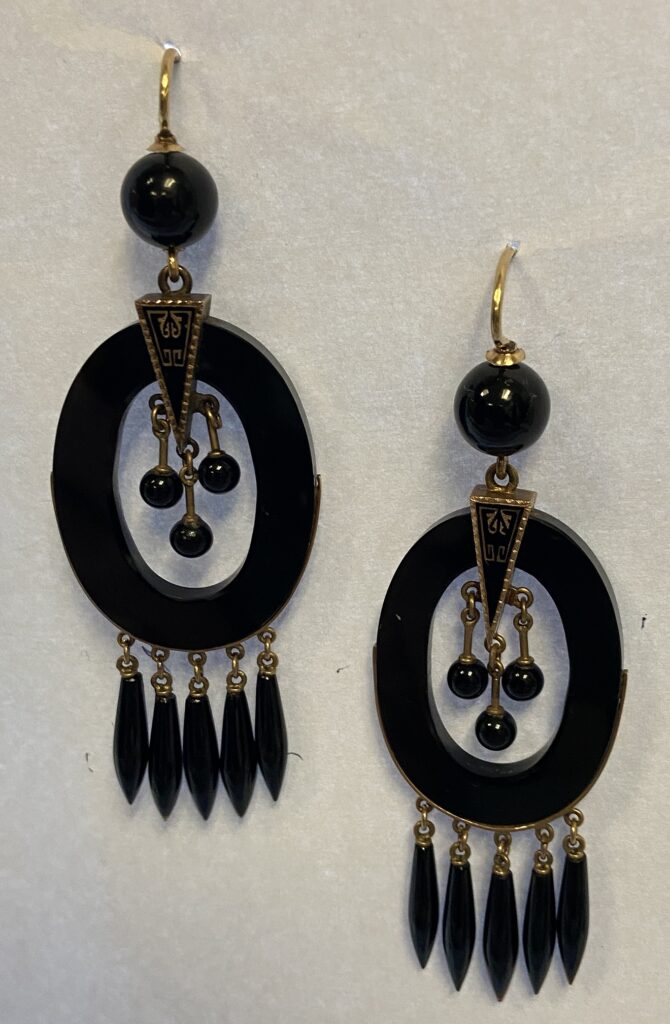
Like many things in the Victorian era, there were strict rules around what was appropriate to wear during the mourning period which was divided into stages that dictated what could be worn. The mourning period, which was obligatory to show respect for the dead, could last anywhere from a year to two and a half years depending upon the relationship to the deceased. During these years, jewelry was used to show others that you were in mourning and what part of the mourning cycle you were in. Mourning jewelry was such an important part of life that there were jewelers who specialized in making it and as wealthy people began commissioning custom pieces, it became even more popular. From simple rings that held a lock of hair to more elaborate gold and gemstone pieces, mourning jewelry was an important part of any collection.
Hair Jewelry
Hair was an important element of mourning jewelry. It was used in two ways: It was woven or braided into rings or bracelets, or a lock of the deceased person’s hair was encased under glass in a small compartment in a pendant, ring or brooch. Sometimes it was hidden under glass on the back of the jewel, while the front had a portrait of the deceased, or was a jeweled piece. While hair jewelry may seem macabre to us today, Victorians believed that hair was sacred, holding the essence of the person, creating a special lasting connection between the living and dead, that transcended death. Mourning jewelry was also supposed to bring comfort to those who were grieving.
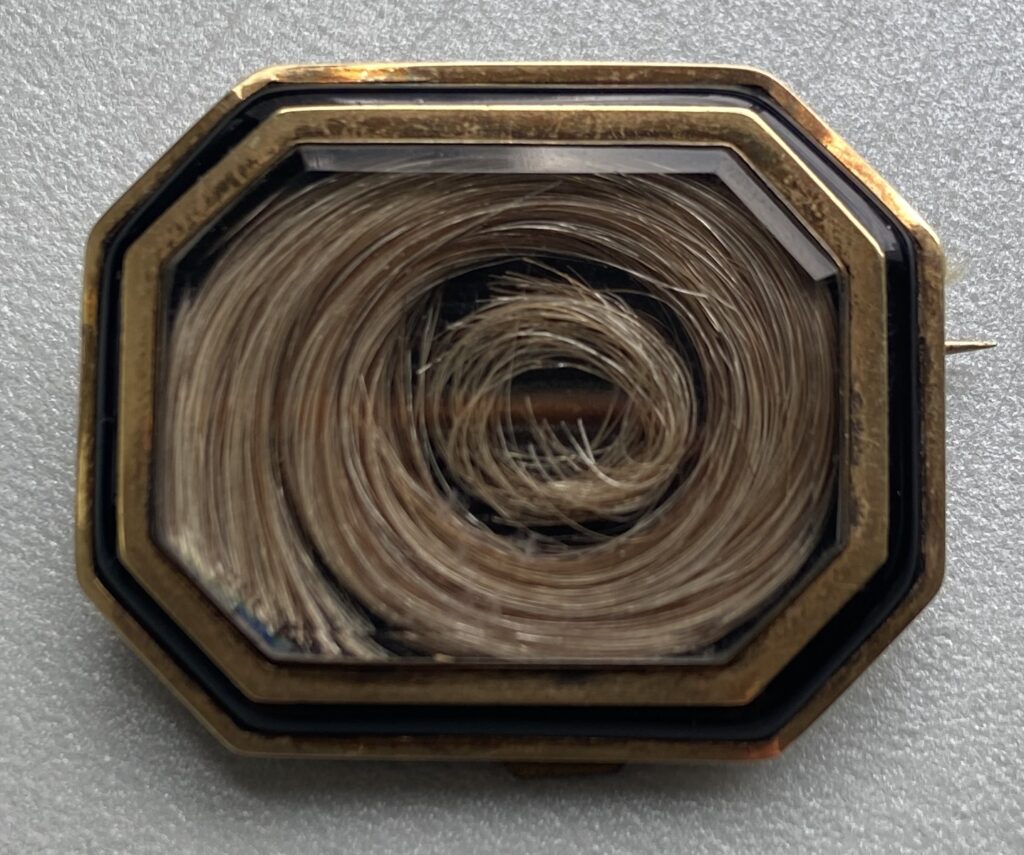
Gemstones in Mourning Jewelry
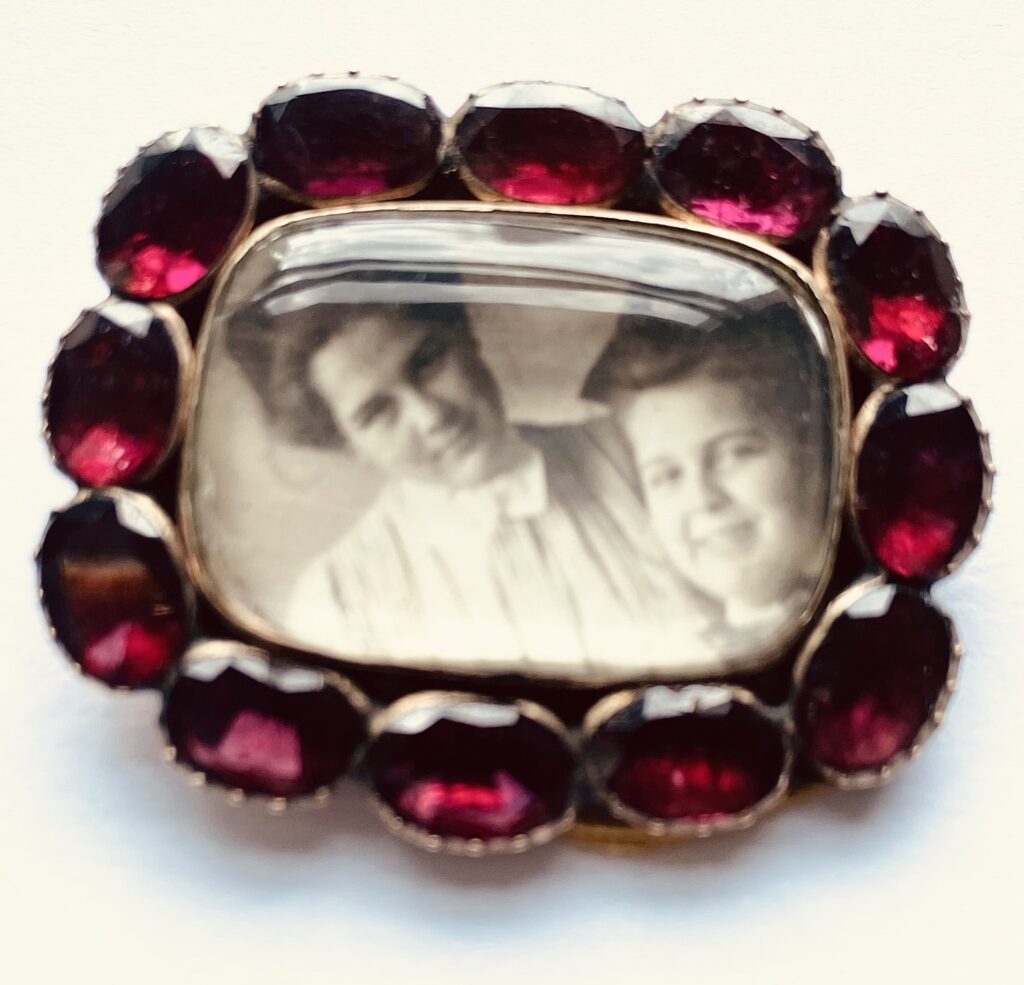
The type of jewel, the gemstones, enamel colors and motifs used on a piece of jewelry all held meaning. Jet, a type of lignite, which has an inky black color was commonly used in mourning jewelry as was onyx. These two stones in particular were often found in mourning jewelry that was worn during the first year. After that dark gemstones, especially garnet, and sometimes amethyst or turquoise were acceptable stones for mourning jewelry, which often featured pearls, to symbolize tears. Enamel colors were also symbolically important. While black enamel was somber, white enamel was used in pieces that were for mourning a young, unwed woman, while royal blue enamel was used to show respect.
Symbols in Mourning Jewelry
Certain symbols that held deep meaning were included in the design of mourning jewelry. Forget-me-not flowers and lily of the valley flowers which symbolize remembrance, were associated with mourning, while flowers in a clasped hand represented love and friendship, the bond between living and dead, or farewell. The weeping willow tree, symbolizing grief, was an important motif, along with doves, which represented peace and calm during the grieving process were also popular. Urns were a significant shape in mourning jewelry signifying eternal rest and remembrance. Crosses, representing the hope of resurrection, were commonly used in designs as were angels, who were considered messengers between heaven and earth, bestowing protection and heavenly guidance.
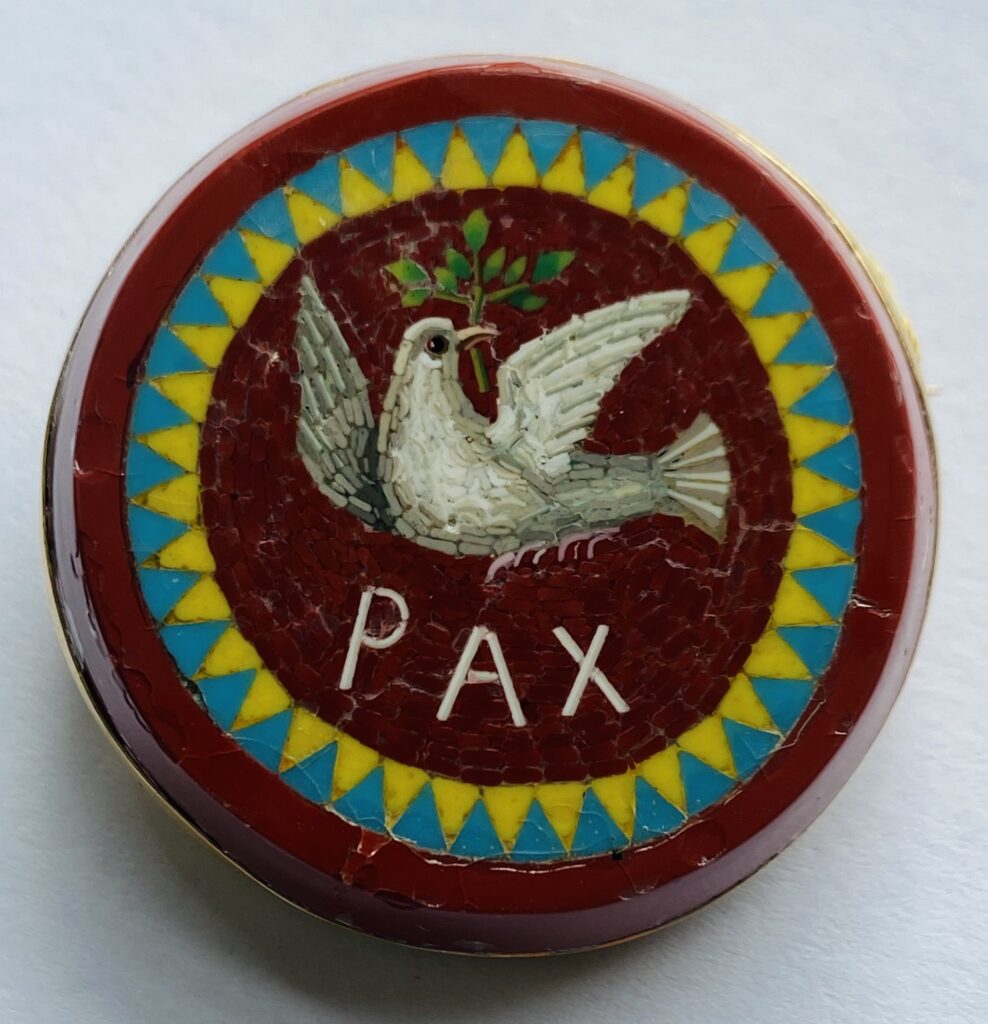
Brooches in Mourning Jewelry
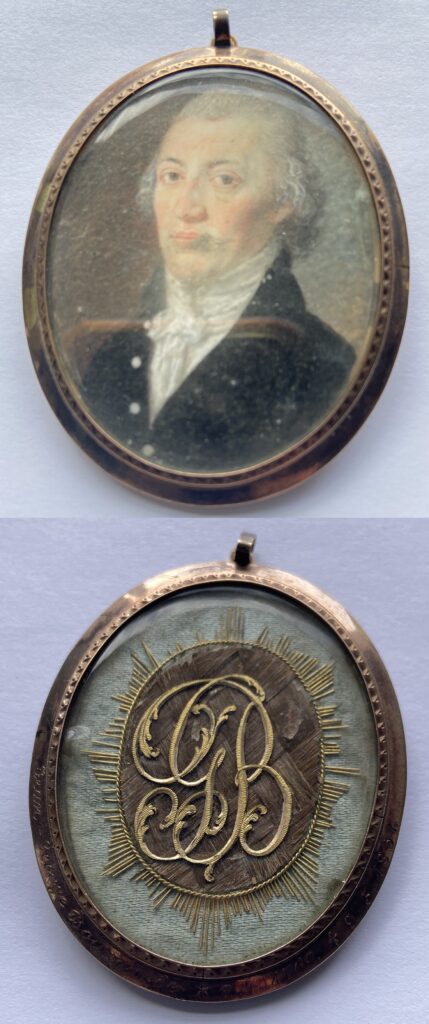
Brooches, many of which had a hidden compartment on the back to hold a lock of hair, were a particularly prevalent form of mourning jewelry as they are easily seen by others when worn. Lockets, which kept a deceased loved one close to the heart, were also commonly worn items of mourning jewelry. Pendants often had a miniature portrait of the deceased on the front with a place to hold hair in the back. Mourning jewelry was frequently engraved with names, initials and dates as well as phrases such as “in loving memory” or “forever in our hearts”. Mourning jewelry can also be found in the form of cufflinks or watch fobs.
Towards the end of the 1800’s mourning jewelry began to fade from fashion as a new generation found new ways to grieve. Meant to be a reminder of those who passed away and a comfort to those grieving the loss of a loved one, mourning jewelry was a tangible way for people to acknowledge their emotions and pay respects to the one who moved on. Today, these very personal pieces of jewelry are highly collectible for jewelry enthusiasts and history buffs alike.
Top of Page: Queen Victoria in black mourning clothes wearing her wedding ring and a locket. A wedding ring as sole ornament was used by Victorians as a metaphor for bereaved widowhood. Color lithograph, circa 1861-1870, from the British Museum, Public Domain, courtesy WikiCommons.
Authored by Amber Michelle
